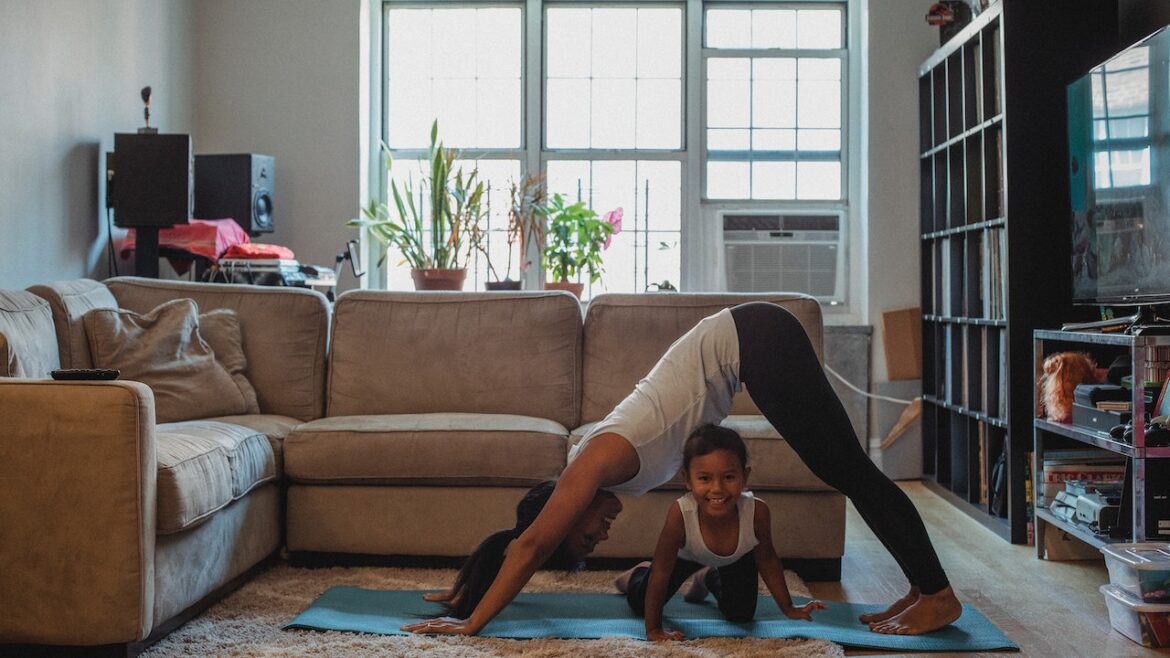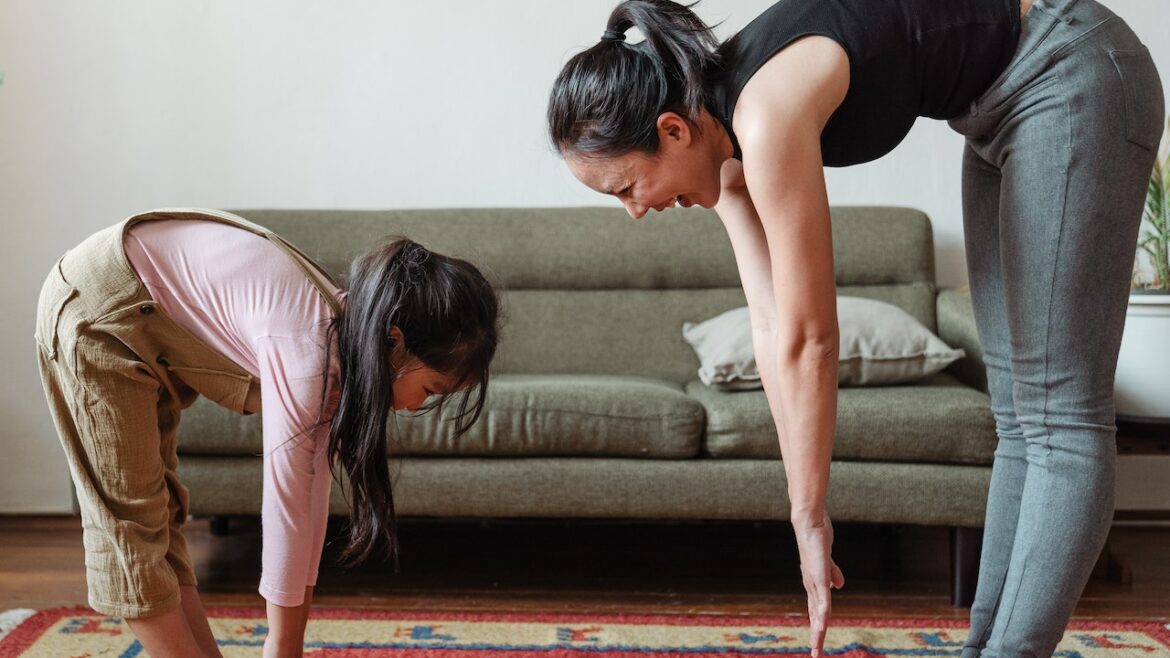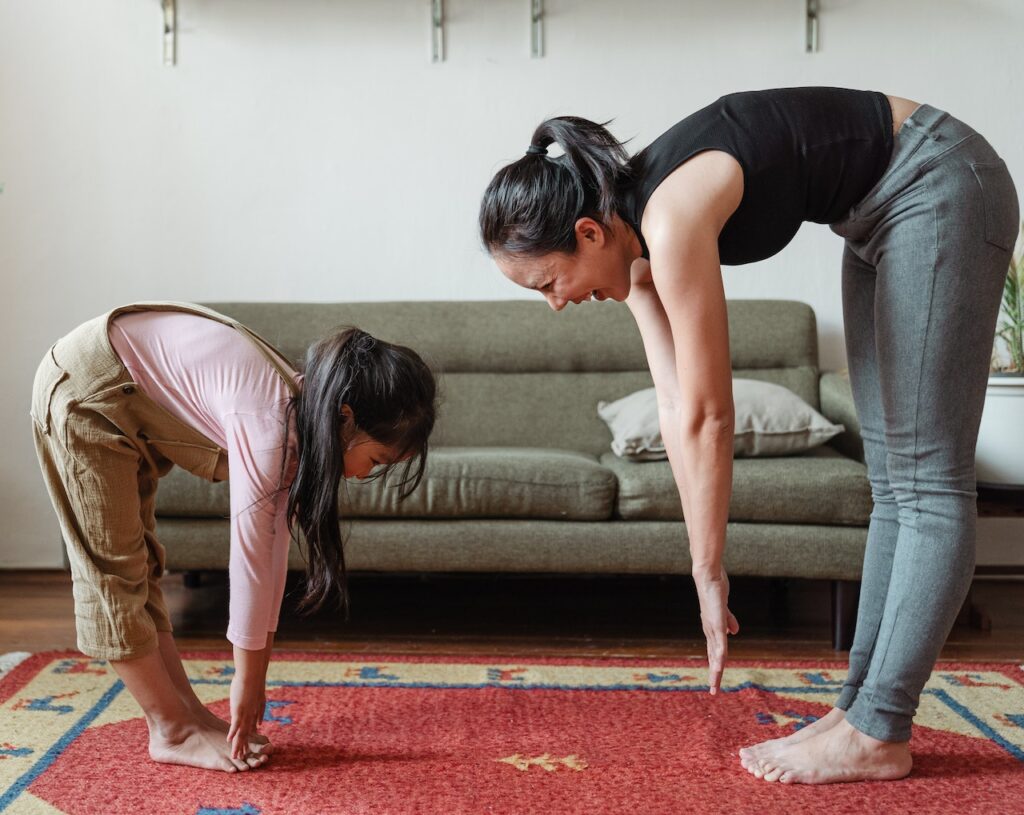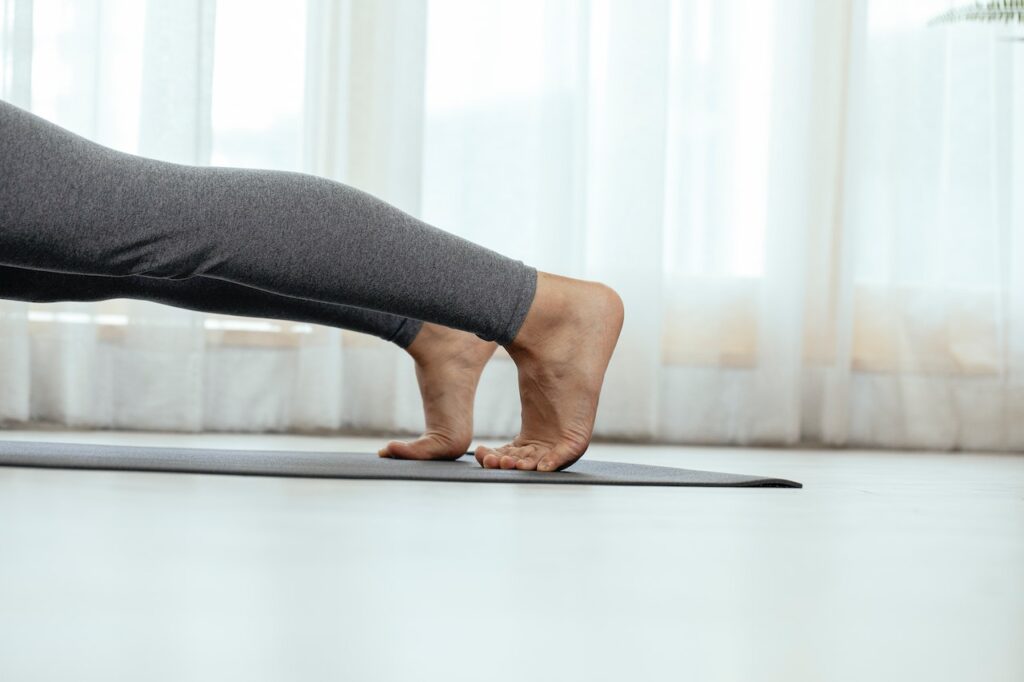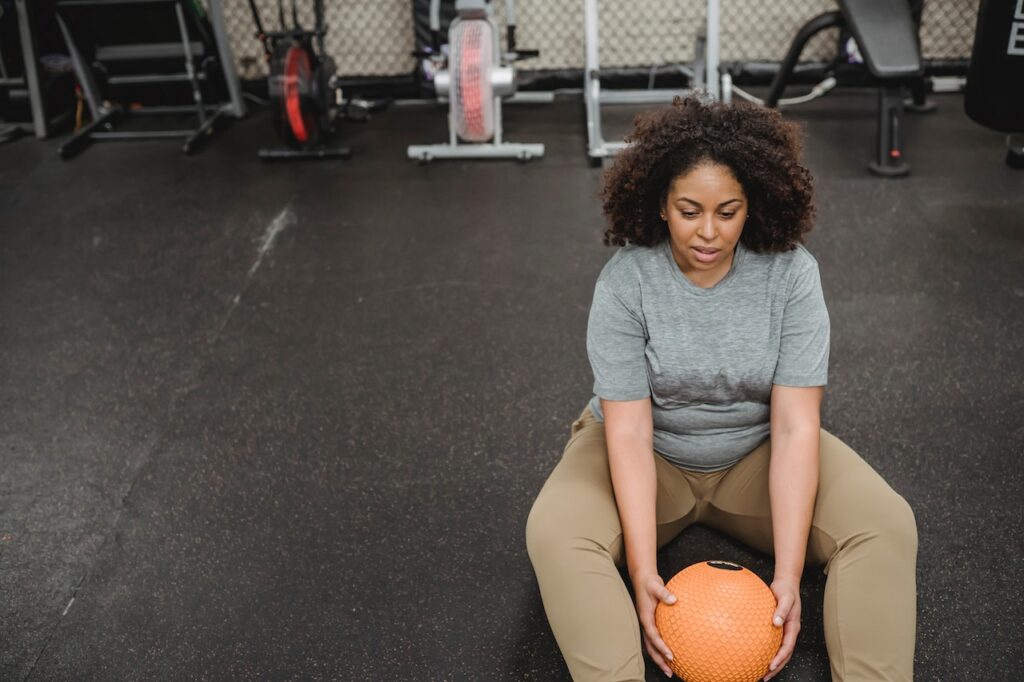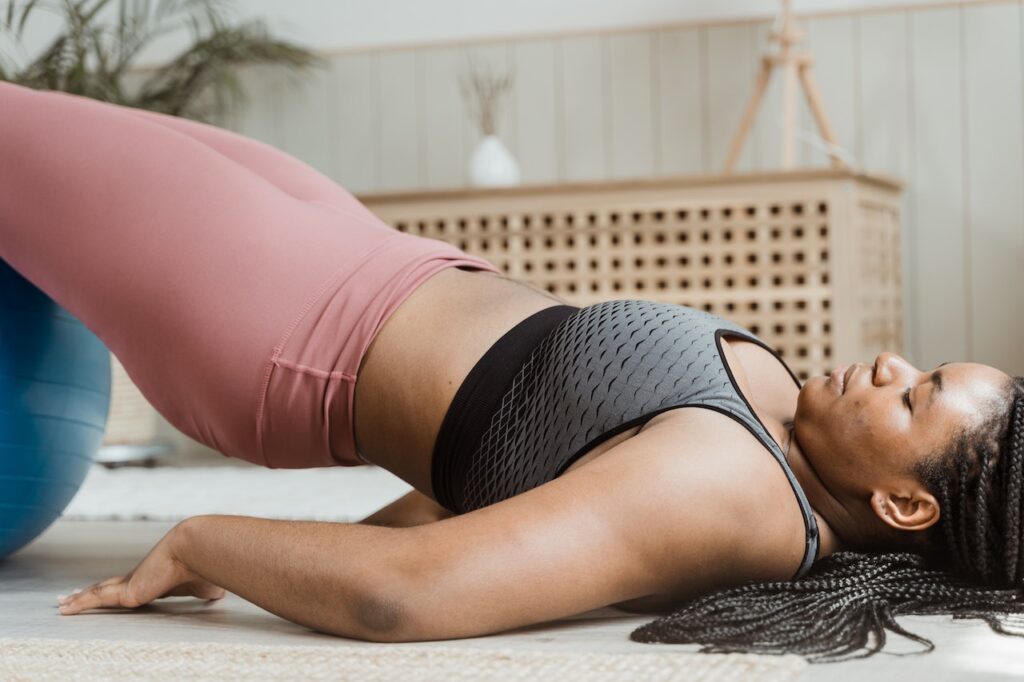If you are brand new to parenting or have added a new child to your growing family, you probably feel that there is barely enough time during the day for just about anything, let alone time for yourself.
This is especially the case for exercising.
Our children mean the world to us, but they also consume a lot of our time, and personal care activities such as going to the gym can easily fall by the wayside. Not to worry because we’ve got you covered in this blog! Keep reading for 3 quick exercise tips for parents if you can’t make it to the gym.

Turn Playtime Into a Mini Workout
If you are spending time on the floor with your child working on things like tummy time, head control, rolling, etc, it is the perfect opportunity to perform some functional movements for yourself.
3 bodyweight floor movements that can be easily performed are:
- Pushups: Whether it’s a standard pushup or from the knees, you can do these on the floor while your baby lays or plays. Be sure to include plenty of funny faces and sounds!
- Planks: Similar set up to the pushup, these can be done in a tall plank or plank on your forearms. To add more fun and challenge, perform small reaches toward your child. Depending upon where your child is at developmentally, you can either hold small toys over their head or hand them a toy.
- Bridges: Double and single-leg bridge variations are always options and can be done on the floor right next to your kiddo. Depending upon your skill and comfort levels, you can hold them on your lap or in your arms during the bridge movement.
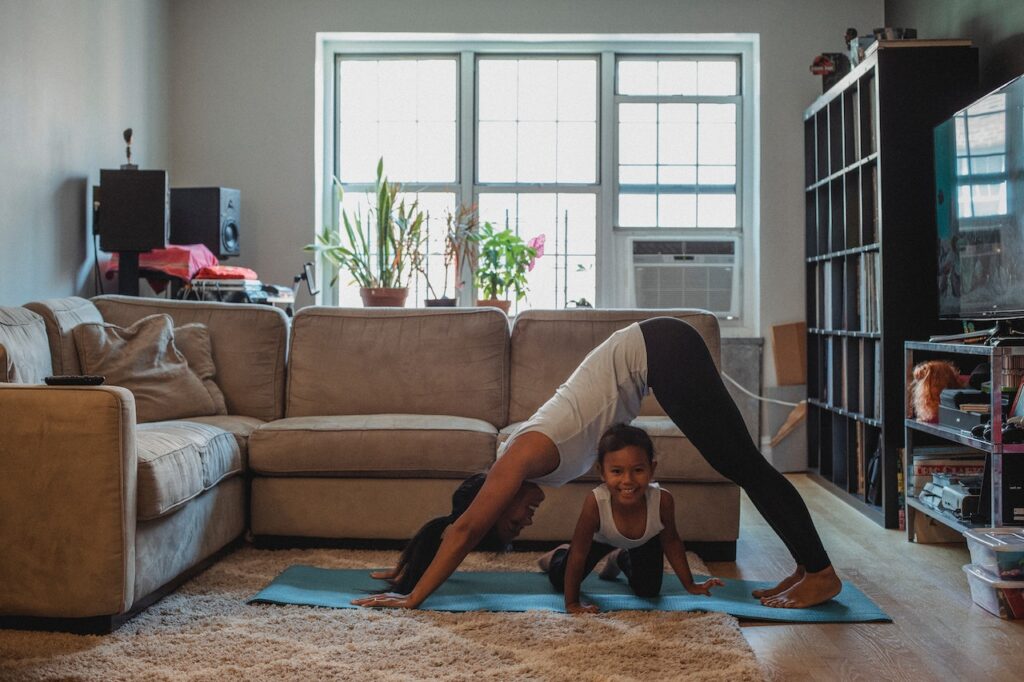
Invest in a Baby Carrier and Use Your Baby for Some Resistance!
Baby carriers are a safe and effective way to add resistance to typical bodyweight exercises. They typically are worn much like a weighted exercise vest and can be used just the same. They will free up your hands and allow for some bonding time with your child while you get some movement in for yourself! So in our opinion, they are worth the investment. You could even put it on your baby registry! Dads (and moms too) may especially love something like the Tactical Baby Carrier.
Here are 3 movement options to try with your little person along for the ride:
- Squats – start with a comfortable amount and depth. You can touch down to a chair or simply to an air squat to an appropriate depth.
- Lunges – similar things to consider as the squat, but if you need extra help with balance, you can always use a free hand to hold something sturdy like a chair or countertop.
- Walking – ditch the stroller for a walk or two. Walking while wearing some type of weight, also known as “rucking,” can be a great way to build cardiovascular endurance and strength.
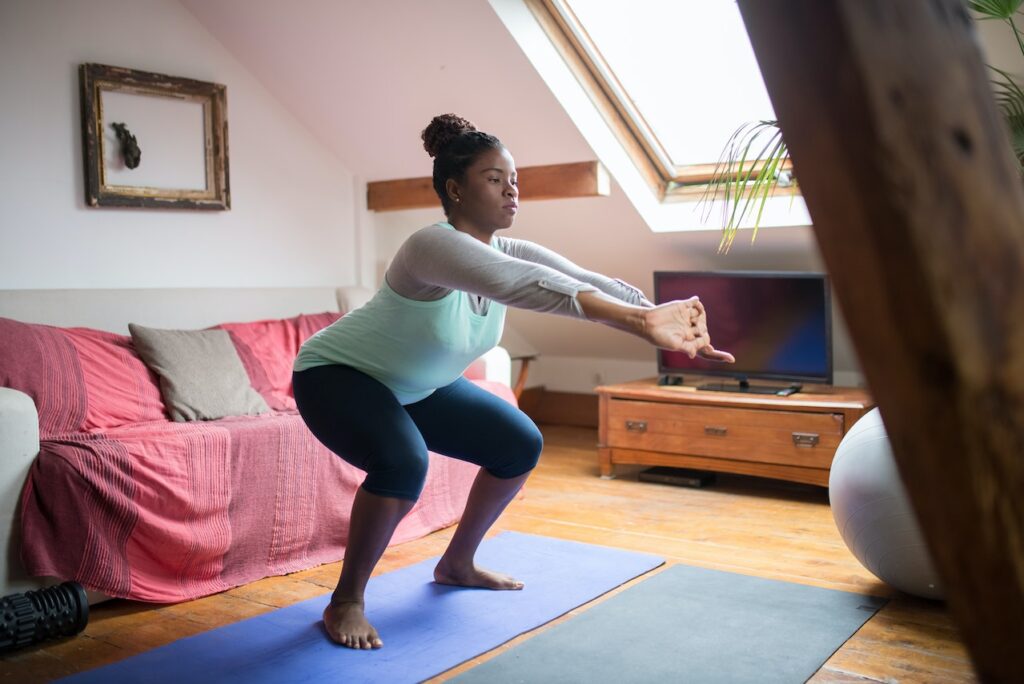
Schedule Times With Your Partner to Workout Together or “Trade Off”
This may be a tough pill to swallow (because we’re all guilty of it), but there are better ways to spend time together as a family that doesn’t involve a TV or being glued to a phone. One healthy way is to exercise and move together!
Supportive partners can motivate one another and hold each other accountable, all while spending quality time with their children. You can each take turns playing with your child while the other gets their reps in, or do a tandem workout with any of the suggestions above.
Now with that said, despite some of the creative and fun ways you can incorporate fitness into time at home spent with your child, sometimes it just can’t work. Perhaps schedules don’t align or you simply need time to yourself. We highly recommend you take every opportunity to do so as needed, so a supportive partner is crucial to make this happen. This is where you can “trade off” watching your child while your partner gets their workout in.
If you don’t have a partner to trade off time with, ask a fellow parent, friend, or family member to lend a hand. Asking for help is never a bad thing. You can also look into local programs or online fitness instructors/trainers that offer child-friendly workouts.

It doesn’t take much to get going, but that sometimes is the hardest part. So to make things easy, we recommend you plan ahead. Sit down with your significant other before the week starts to plan out days/times you each are able to work out while the other is on kid duty. Maybe trade off mornings or evenings, or simply tag them in and work out back to back. Don’t forget about weekends as this may allow for more flexibility in your schedules. Also, consider options outside of your house like the park or playground!
We hope this was helpful in giving you some options to still stay on track with routine exercise while juggling life as a parent. As a reminder, never do any exercises out of your skill set or comfort zone, especially ones that could jeopardize your child’s safety. Consult with your healthcare provider if you have any doubts or questions. Happy moving!
If you have pain, limitations, or don’t know where to start- contact us today.


